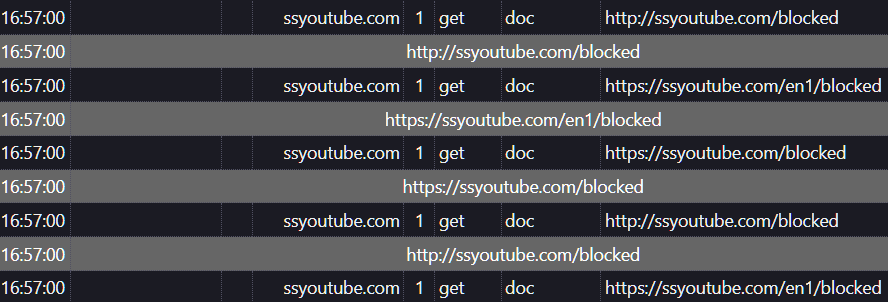 According to the International Federation of the Phonographic Industry (IFPI), the availability of unlicensed music “remains an issue for the
According to the International Federation of the Phonographic Industry (IFPI), the availability of unlicensed music “remains an issue for the
whole music ecosystem.”
In its 2022 ‘Engaging With Music’ report, IFPI estimates that almost a third of people say they have used illegal or unlicensed methods to download and listen to music. The major threat in today’s market has been growing for many years, mainly because it’s so quick and easy.
What is Stream-Ripping and How Does it Work?
The official explanation from IFPI reads as follows: Stream ripping is the illegal practice of creating a downloadable file from content that is available to stream online. It is now the most prevalent form of online music copyright infringement.
While the industry group’s definition is broad enough to encompass all streaming services offering licensed content, a more specific description for the lion’s share of related piracy is carried out by people using YouTube-ripping tools.
These are available in software form for local use but the most simple and popular option is to visit a website set up for the job. Given their number and popularity, a basic Google search usually throws up plenty of options, but not always.
Legal Action
Users in some regions may find that their ISP blocks access to some YouTube-ripping platforms. This is the result of legal action taken by the major recording labels in several countries, where courts had to determine the legality of the platforms based on functionality, technical issues, conduct, and the likelihood that most visitors use them to infringe copyright.
Denmark was the first country in the world to declare stream-ripping illegal and currently blocks sites with flvto, ytmp3, yt1s y2mate, and savefrom branding, among others. Similar brands appear in legal documents relating to a High Court ruling in the UK.
The same is broadly true for blocking action in Australia while a more recent blocking injunction in India targets 18 sets of domains, with each set consisting of often multiple domains linked to the same platform or perceived ownership.
Small Domain Names, Extraordinary Traffic
Given that domain hopping and multiple domains pointing to the same infrastructure is common, traffic to sites can be more difficult to calculate than usual. YouTube-ripping site yt1s operates from several domains but on its own, the .com variant is good for 15 million visits per month. 15% of the site’s traffic comes from India, where it’s supposed to be blocked.
Y2mate is much, much bigger. Just one of its domains received more than 117 million visits last month. Another y2mate-branded domain receives almost 40% of its 3 million visits each month from India, where some y2mate domains are blocked – but not this one.
Another y2mate variant currently enjoying 22 million visits per month now gets 15% of its traffic from the UK where other rippers are blocked, but not this one.
Other ripping site brands, which in some cases are linked to other popular brands, also enjoy huge traffic. Savefrom, for example, which received 113 million visits last month alone. And then there’s this monster, a ripping platform that receives almost four times more visits than Fmovies, which in itself is no slouch at almost 92 million per month.

Traffic aside, the ssyoutube.com domain is interesting for other reasons too.
SSYoutube Evades Takedown Notices
While the music industry considers YouTube-ripping sites illegal, ssyoutube gets almost zero attention in Google’s Transparency Report due to its setup. The domain has been targeted in just seven requests with just eight of its URLs removed since 2018.

As the image above shows, ssyoutube has an aversion to visitors from the UK; it appears to deliberately block them. Y2mate took similar action in 2021, possibly due to music industry legal pressure but nothing was confirmed officially in public.
While few regular DMCA notices target ssyoutube, the UK’s BPI has filed many DMCA anti-circumvention notices against the platform, including some that show links with savefrom, a platform mentioned earlier. But does any of this time, effort and money amount to any more than a sticking plaster?
So Who is To Blame and What Can Be Done?
The fact that the music industry has made virtually all of its content available at a fair price (or free) means that the ripping phenomenon cannot be attributed to the labels failing to read the market. Bluntly, it’s difficult to see what more could’ve been done.
This is also costing the labels a lot of money. In addition to effort already expended on general anti-piracy work such as DMCA notifications, per-country site-blocking injunctions are very expensive. When treading new ground on the circumvention issues surrounding YouTube-ripping platforms, even more so. But the legal costs don’t stop there.
Seemingly with no options left, the major labels are taking legal action against DNS providers like Quad9 and Cloudflare, insisting that somehow they’re to blame for extraordinary levels of piracy carried out by stream-ripping sites and their users.
A hosting provider in Germany also faces legal pressure for simply linking to youtube-dl, the software coincidentally used by many ripping sites today. Will pushing the blame onto yet another intermediary solve this problem?
So What About YouTube?
When huge ‘pirate’ platforms are discussed along with the legalities of stream-ripping and associated circumvention of technological measures, only rarely is YouTube suggested as a party to a widening conflict prepared to suck in any and all intermediaries.
If DNS providers or hosting companies “aren’t doing enough” to tackle piracy carried out by people they have nothing to do with, does that mean that YouTube is next? Despite all the talk about systems that “effectively control access” to a copyrighted work, YouTube’s ‘rolling cipher’ is by no means effective.
Pragmatically speaking, legal interpretations that attempt to redefine the original meaning of the word “effective” to mean something else under the DMCA, are all well and good, and may win a case here and there. But does wordplay stop people from ripping billions of tracks from YouTube and copying them to their machines?
It’s unlikely that the reasons for this current situation will find themselves aired in public but in effect – effectively – YouTube hosts almost every song in the world, on a platform that has no useful copy protection mechanism, and is actually licensed to do so.
A third of a billion visits to one site in one month is pretty wild, but nowhere near as wild as chasing down DNS providers and hosts while claiming they aren’t doing their bit to prevent piracy.





